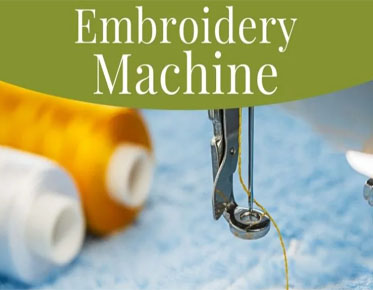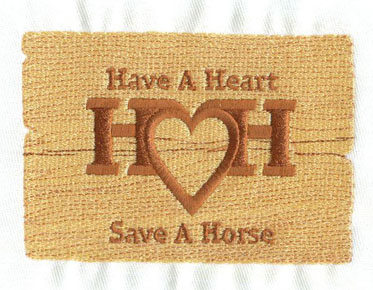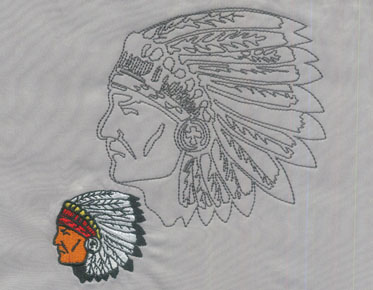Knowledge from Eagle digitizing Embroidery Machine Speeds for Best Quality Stitches
Not only is the speed of the embroidery machine important for the presentation, but also for the speed of the designs. You can select from various speeds whether you are using a household or a business computer, but this does not necessarily mean that the quality of all embroidery projects will be accurate. The following content also has some reference value for Eagle digitizing.
The speed of your embroidery machine depends on how many stitches your machine can create per minute. Increasing the speed can result in poor quality embroidery projects, which is reasonable for designs that are rich in detail and color. For example, the constant speed of moving the machine can cause the embroidery to crush and wrinkle.
Eagle Digitizing guide you on why you shouldn't force the speed of your machine to speed up your work, how to get faster results while maintaining good quality, and why you should get high-quality digital for the highest quality modern embroidery designs embroidery.
Embroidery machine speed
Thread width, material, fabrics you use, what kind of embroidery you are assembling, and embroidery digitization are some of the factors that affect the speed of machine embroidery digitization. This is essential because every material you work with requires the precise tension and motion of the machine to recollect that material so your final job doesn't have any folds or nests.
Embroidered digital fabrics
If you're working on other fabrics, you'll
need extra speed. If you are embroidering rich materials such as leather and
vinyl, or working with very soft fabrics that tend to wrinkle, you must reduce
the machine speed. Generally, the faster the machine runs, the more tension on
the machine, increasing the chances of wrinkling. This chance is higher in very
thick or very light fabrics.
Fabrics such as silk, nylon, tulle, etc. require a more delicate treatment.
The progressive mode of operation will reduce tension while stitching, allowing material to lay more unaffected and loosening folds in embroidered designs.
Embroidery Type
Certain types of embroidery require less tension to pull the design, such as freestanding lace and embroidered designs with a variety of colors and details. Of these possibilities, too much speed can cause unstable pieces to fall apart, and there is also the possibility of separate lace or unshaped embroidery.
Thread width is an important factor affecting machine speed. Thicker threads will require you to slow down the machine as more extended threads will assemble more movement on the frame. If it gets bigger, the machine will automatically slow down according to the width of the stitch.
Thread type and quality
You depend on the type of embroidery thread you use in your embroidery design. Whether it's wool, acrylic, cotton, a decadent treat, or a more placid thread, you may need to modify the speed of your machine to adjust the minimum number of thread breaks or nests achievable. Polyester threads are more consistent, durable, and less prone to breakage. Rayon thread, on the other hand, is a man-made fiber made from wood cellulose that is difficult to match even if it looks beautiful. Affordable and unstable threads tend to break more leisurely; the exact situation happens with old or outdated threads. OK, threads do have a rack life. Thread won't last long in dry, hot, or sticky conditions, so keep that in mind before putting thread in unethical places.
Types of Embroidery Machines
Multiple household embroidery machines have adjustable speeds, and all commercial machines can be programmed to be fixed or slowed down according to production needs. These adjustments are valuable for a variety of embroidery projects that require different stitch speeds, and some commercial machines are designed to adjust for high-speed production with uniform quality.
Sometimes, when your machine speed is too high for the embroidery you are working on, you can end up with missing stitches or stitches. A missed stitch can mean your machine is running too fast and not having enough time to heal before moving on to the next stitch. Too much speed can cause the needle to deflect and miss the turn.
Sometimes when your machine’s speed is too high for the embroidery you’re working on, it can end up with overlooked or missing stitches. Missed stitches might mean your machine is operating too fast and doesn’t have enough time to heal before moving to the next stitch. An overextended speed can cause the needle to deflect and miss the turn.
THE PRIMARY FACTOR THAT WILL IMPACT YOUR
MACHINE SPEED
Furthermore, digitizing embroidery is a
crucial aspect that will dictate how fast your machine can run. It’s well known
among the more professional people in the embroidery industry that a
well-digitized design will always provide you with better results.
Most machines run approximately 600-750
stitches per minute for embroidery designs. If a design has several color
changes and trims, embroidering the design will take significantly longer. All
these stops slow down embroidering, and embroidery digitizing stakes back on
stops. An average embroidery stop can take anywhere from 6 to 20 seconds to
provide you with an idea. Some poorly digitized designs can have dozens of
stops, adding time to production.
Using a well-digitized design with no
thread breakage and meaningless stitches digitized by our professional
embroidery team makes a big difference. A skillfully digitized design must be
production-friendly. Well-digitized designs will save you money and time; in
the long run, you can recover the money you paid for them if you use them
multiple times. We know the embroidery problem solutions for quality embroidery
designs.
Machine Embroidery Digitizing Speed Takeaways
Machine Embroidery Digitizing Speed
Your machine embroidery digitizing speed
will change depending on many elements. You must find the proper operatory
method for each embroidery task and comprehend your tools to get the best
results.
However, an essential thing, and the one that all experienced embroiderers declare, is that you want to load good-quality machine embroidery designs.
This is the one thing you can select that
will stay the same for any embroidery project you’re making and will presently
involve the quality of your final product, production time, and speed. That’s
why embroidery digitizing speed is so essential.
We provide the best quality embroidery digitizing and vector art services at the lowest cost with a superfast turnaround.
Welcome To Eagle Digitizing
Best Online Custom Embroidery Digitizing
&
Vector Art Work Services



